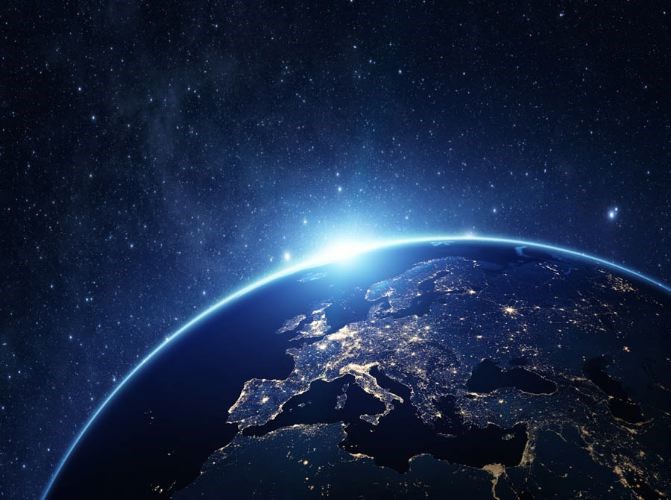Part one of two
In past columns, I have tried to explain the scale of the universe. It is hard to deal with distances which are beyond our physical ability to see. Still, that leaves an amazingly broad range within our comprehension, from tenths of a millimetre to 40 or 50 kilometres and much more if you look up at the night sky.
Equally or even perhaps more difficult to address are the vast distances of time involved in the universe. A second, a minute, an hour are all easily observed. The days, weeks, months and years are within our comprehension.
But longer time units are sometimes more difficult to grasp. And really deep time extending back to the beginning of our planet can be mind-numbingly large. Geologist call this "deep time."
So I thought I would try an analogy. I am going to use distance as a way of marking off the passage of the years. In this equation, one centimetre equals one year. At this rate, one century would be one metre and a billion years would work out to 10,000 kilometres.
With this scale in mind, we are going to take a trip 45,400 kilometres long - or more than once around the planet - to cover all of Earth's existence. To begin our trip, we would need to be somewhere in the North Atlantic approximately 600 km east of
St. John's, Newfoundland.
Like sailing the North Atlantic, the first 8,000 km of our trip - from the mid-Atlantic to 2,200 kilometres west the B.C. coast - is pretty monotonous. Unlike the mid-Atlantic, there is not a lot of water. The first stretch of our trip would be through a planet bombarded by meteors and asteroids, even the occasional comet, as the surface of the Earth cooled from its Hadean existence. There would be very little water present and what is present would be in clouds or water vapour. It wouldn't start raining until somewhere near the 7,000 km mark by which point, we would have reached the Pacific Ocean.
With rain, we see a shift through biochemistry to become biology.
Molecules would self-assemble.
Complex reaction sequences would begin to engage in feedback loops. More complex structures would evolve. It is here, 8,000 km into our trip we begin to see the first signs of life.
And 5,000 km on we come across something which is recognizable as a cell. For the next 26,400 km, the world is covered in rocks, water and slime.
Eventually, for the last few thousand kilometeres, it is even green slime.
With each centimetre of the trip being one year, we would need to travel once around the planet back to our starting point before would begin to see more complex life forms.
About 5,410 km from Prince George, the first tube worms can be found. Around 5,100 km, the first trilobites.
But once complex life got going, it took off with a vengeance.
Hundreds of species of trilobites, nautiloids and even massive sea scorpions appear along the way - a water world without fish, but it teeming with life nonetheless.
The number of species swimming the shallow sea tripled over a 10,000,000 year period - just 100 kilometres on our voyage.
Just past our starting point, 41,000 km into our trip or 4,450 km from Prince George, the whole thing came to an abrupt end.
The first mass extinction seized the planet. Some 60 to 70 per cent of all species disappear from the fossil record. It wasn't a single cataclysm event - no Biblical flood or fire - but abrupt changes in the climate which did in much of life.
Estimates of the timespan over which this extinction occurred vary, but in terms of our trip around the world, our second pass through St. John's leads to a couple of hundred kilometres in which life all but disappears. Volcanic activity, high and low carbon dioxide levels, ocean acidification, and glaciation wipes out most life on the planet in a mere 100 kilometre stretch along the road.
However, life persists. It takes another 50 km, but eventually we get past the barrens at the end of Ordovican.
Things with backbones start to take over the planet. We are now traveling through the Devonian period in which life exploded across the surface.
If this was a real road trip, we would have travelled through 150 kilometres of "Are we there yet?" to a stretch where every few metres, a new unfamiliar but glorious sight emerged.
Life moved onto land. Shrubs and grasses appeared along with all the requisite necessities of shifting from an aqueous to a non-aqueous environment. Plants adapted to changing levels of atmospheric gases. And the first trees appeared.
If the first 41,000 km of our trip was monotonous, the remainder is filled with the complexity of life.
But we will need to finish the trip next week.



